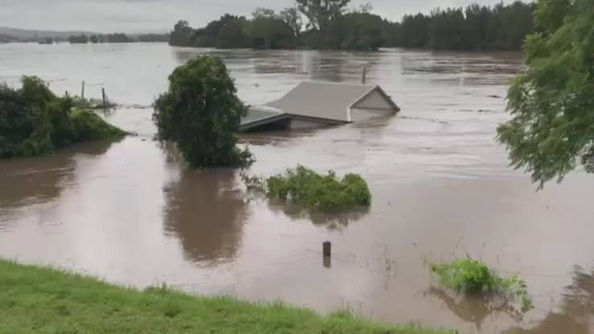East Coast Flooding: Business Support
- Belinda Raso
- Mar 23, 2021
- 3 min read

Businesses affected by the recent severe flooding along the east coast may be eligible for a range of financial support from both state and federal governments as well as the major banks.
Last Friday, the Bureau of Meteorology and NSW State Emergency Service warned of a developing rain and potential flood situation affecting parts of NSW.
They issued a severe weather warning for heavy rainfall, possibly life-threatening, and damaging winds, for the Mid North Coast as well as parts of the Northern Rivers and Hunter forecast districts.
The NSW State Emergency Service also asked all people in areas impacted by floods and storms to monitor the situation closely and act on all advice given by emergency services immediately.
In response, governments and banks have either announced or activated disaster relief programs for businesses potentially affected by the heavy rain, thunderstorms and flooding.
Federal government disaster relief
On Sunday, Prime Minister Scott Morrison announced that the federal government has activated the Australian Government Disaster Recovery Payment (AGDRP) and Disaster Recovery Allowance (DRA) for 34 NSW local government areas affected by storms and flooding. The full list of local government areas can be found here.
Under the AGDRP, a one-off, non-means tested payment of $1,000 per eligible adult and $400 per child is available to individuals who have been adversely affected by a major disaster either in Australia or overseas.
The DRA is a short-term payment to assist individuals if a declared disaster directly affects their income.
Individuals can access the DRA for a maximum of 13 weeks, with Services Australia paying the DRA from the date an individual loses income as a direct result of the NSW floods. Services Australia also noted that DRA is a taxable payment and is able to withhold voluntary tax deductions from the payments.
Further, individuals receiving the DRA might be able to get the Beneficiary Tax Offset, which may reduce the amount of tax paid. Individuals have until 20 September 2021 to make a claim for the AGDRP and DRA.
NSW government disaster relief
The NSW government announced that it has activated its Disaster Recovery Funding Arrangement (DRFA) program for 34 local government areas.
The DRFA is jointly funded between the federal and state and territory governments through which the federal government provides financial assistance to support state governments with disaster recovery costs.
Eligible costs include assistance measures for individuals and families, businesses, primary producers, non-profit organisations and local and state governments.
Loans of up to $130,000 at a fixed concessional interest rate may also be available to small businesses and primary producers that have been directly impacted by a disaster.
These loans may be used to meet carry-on requirements or to repair or replace damaged property not covered by insurance.
The loan program is currently administered by the NSW Rural Assistance Authority.
Support from the banks
The Australian Banking Association announced that the major banks have a range of measures in place, and can include:
a deferral of scheduled loan repayments
waiving fees and charges, including break costs on early access to term deposits
debt consolidation to help make repayments more manageable
restructuring existing loans free of the usual establishment fees
deferring interest payments on a case-by-case basis
offering additional finance to help cover cash flow shortages
deferring upcoming credit card payments
increasing emergency credit card limits.
Australian Taxation Office support
The ATO also said that it will support businesses facing problems meeting their tax obligations due to flooding.
Depending on your circumstances, the ATO said it may:
give extra time to pay debt or lodge tax forms such as activity statements
help find a lost tax file number (TFN) after verifying an identity
re-issue income tax returns, activity statements and notices of assessment
help reconstruct lost or damaged tax records
prioritise any refunds owed
set up a payment plan tailored to the circumstances of a business, including an interest-free period
remit penalties or interest charged during the time a businesses have been affected.
However, the ATO said employers still need to meet super guarantee obligations for their employees, saying that, by law, it can’t vary the contribution due date or waive the super guarantee charge on late super guarantee payments.
Contact details for government departments and banks
ANZ – 1800 149 549 – website
Australian Taxation Office (ATO) – 1800 806 218 – website
Commonwealth Bank of Australia (CBA) – 1800 314 695 – website
National Australia Bank (NAB) - 1300 961 577 – website
NSW Rural Assistance Authority – 1800 678 593 – website
Westpac – 1800 067 497 – website
Local government areas eligible for government disaster support (as of 22 March 2021)
Armidale, Bellingen, Blacktown, Blue Mountains, Camden, Campbelltown, Canterbury Bankstown, Central Coast, Cessnock, Clarence Valley, Coffs Harbour, Cumberland, Dungog Shire, Fairfield, Hawkesbury, The Hills, Hornsby, Inner West, Kempsey, Ku-ring-gai, Lake Macquarie, Liverpool, Maitland, Mid-Coast, Nambucca, Newcastle, Northern Beaches, Parramatta, Penrith, Port Macquarie-Hastings, Port Stephens, Sutherland, Tenterfield, Wollondilly
Information sourced via www.mybusinessdaily.com.au













































Comments